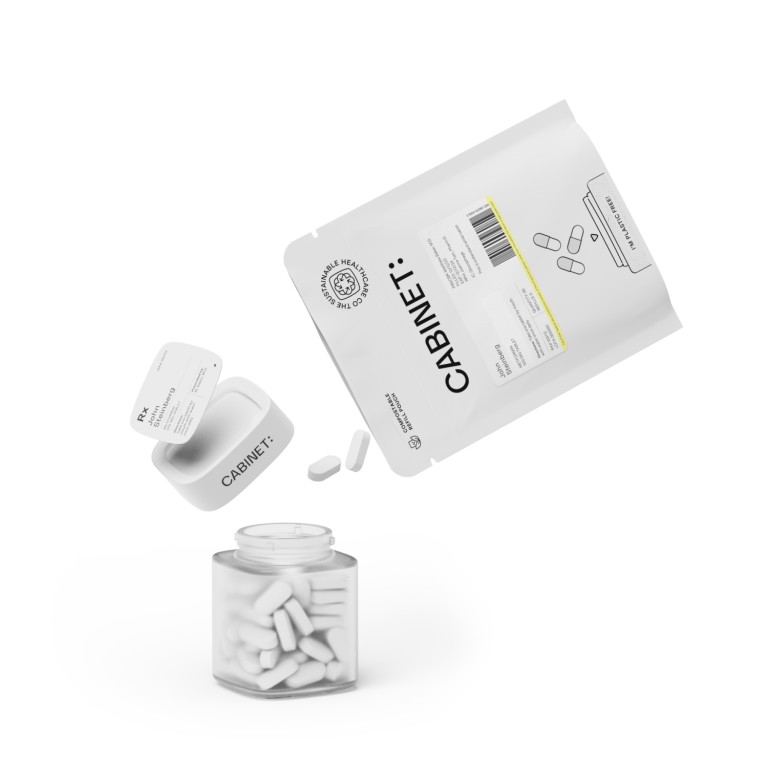Crestor, also known as rosuvastatin, is a widely prescribed medication used in the management of cholesterol levels. As with any medication, finding the lowest effective dose is crucial not only to minimize potential side effects but also to optimize treatment outcomes. In this article, we will delve into the understanding of Crestor and its function, determine the factors influencing dosage requirements, explore the risks and benefits of lower dosages, consider patient considerations for Crestor usage, and discuss the future of Crestor treatment.
Understanding Crestor and Its Function
Crestor belongs to a class of drugs called statins, which work by inhibiting an enzyme called HMG-CoA reductase. This enzyme plays a key role in the production of cholesterol in the liver. By inhibiting its activity, Crestor reduces the amount of cholesterol synthesized, thereby lowering total cholesterol and LDL cholesterol levels while increasing HDL cholesterol levels. Understanding the mechanism of action of Crestor is crucial in determining the lowest effective dose.
The Role of Crestor in Cholesterol Management
Elevated cholesterol levels, particularly LDL cholesterol, are a significant risk factor for cardiovascular diseases such as heart attacks and strokes. Crestor acts by reducing the production of cholesterol in the liver, resulting in lower levels of LDL cholesterol circulating in the bloodstream. Studies have shown that lowering LDL cholesterol levels can significantly decrease the risk of cardiovascular events, making Crestor an effective medication for cholesterol management.
Cholesterol management is an essential aspect of maintaining overall health. High levels of LDL cholesterol can lead to the formation of plaques in the arteries, narrowing them and restricting blood flow. This can increase the risk of developing heart disease, which is a leading cause of death worldwide. By targeting HMG-CoA reductase, Crestor helps to regulate cholesterol levels and reduce the risk of these life-threatening conditions.
In addition to lowering LDL cholesterol, Crestor also increases HDL cholesterol levels. HDL cholesterol, often referred to as "good" cholesterol, plays a protective role in the body. It helps remove excess cholesterol from the bloodstream and transports it back to the liver for excretion. By increasing HDL cholesterol levels, Crestor further enhances the overall balance of cholesterol in the body, promoting cardiovascular health.
The Science Behind Crestor's Effectiveness
The effectiveness of Crestor in reducing cholesterol levels can be attributed to its ability to selectively inhibit HMG-CoA reductase. By specifically targeting this enzyme, Crestor achieves a significant reduction in LDL cholesterol while having minimal impact on other important components of cholesterol metabolism, such as HDL cholesterol and triglycerides. This targeting is a key factor in determining the optimal dosage of Crestor for individual patients.
Research has shown that Crestor's selectivity for HMG-CoA reductase allows for a more precise control of cholesterol levels compared to other statins. This targeted approach minimizes the risk of unwanted side effects while maximizing the therapeutic benefits. It is important for healthcare professionals to carefully assess each patient's cholesterol profile and medical history to determine the most appropriate dosage of Crestor, ensuring both safety and efficacy.
Furthermore, Crestor's effectiveness is not limited to its cholesterol-lowering properties. Studies have suggested that this statin may have additional benefits beyond lipid management. Some research indicates that Crestor may have anti-inflammatory effects, which can contribute to the overall reduction of cardiovascular risk. These findings highlight the multifaceted nature of Crestor's mechanism of action and its potential impact on various aspects of cardiovascular health.
In conclusion, Crestor is a statin medication that effectively lowers cholesterol levels by selectively inhibiting HMG-CoA reductase. By reducing LDL cholesterol and increasing HDL cholesterol, Crestor plays a crucial role in managing cholesterol levels and reducing the risk of cardiovascular diseases. Its targeted approach and potential additional benefits make it a valuable medication in the field of cardiovascular health.
Determining the Lowest Effective Dose
When prescribing Crestor, healthcare professionals aim to find the lowest effective dose that achieves the desired therapeutic effect while minimizing the risk of adverse effects. Several factors influence dosage requirements, including age, gender, body weight, underlying medical conditions, concomitant medications, and individual response to treatment.
It is crucial for healthcare professionals to consider age and gender when determining the appropriate dosage of Crestor. Age can significantly impact the metabolism of the medication, and adjustments in dosage may be necessary to achieve optimal treatment outcomes. For example, elderly patients may have a slower metabolism, which can affect how their bodies process Crestor. Similarly, individuals with impaired liver or kidney function may require lower doses to prevent drug accumulation or toxicity.
Furthermore, gender can also play a role in dosage requirements. Women may need lower doses than men due to differences in drug metabolism and clearance rates. These variations can be attributed to hormonal differences and body composition. Therefore, healthcare professionals must carefully assess each patient's individual characteristics to determine the most appropriate dosage.
Factors Influencing Dosage Requirements
Age and gender are not the only factors that influence Crestor dosage requirements. Body weight is another crucial consideration. Individuals with higher body weight may require higher doses to achieve the desired therapeutic effect. This is because the medication needs to be distributed throughout a larger body mass, and higher doses may be necessary to ensure adequate drug concentration in the bloodstream.
Additionally, underlying medical conditions can impact dosage requirements. Patients with certain medical conditions, such as liver or kidney disease, may have impaired drug metabolism or excretion. In such cases, lower doses may be necessary to prevent adverse effects or drug accumulation. Healthcare professionals must carefully evaluate the patient's medical history and consider any existing conditions that may affect the dosage of Crestor.
Concomitant medications, or medications taken alongside Crestor, can also influence dosage requirements. Some medications may interact with Crestor, altering its metabolism or increasing the risk of adverse effects. Healthcare professionals must review the patient's current medication regimen and consider potential drug interactions when determining the appropriate Crestor dosage. Adjustments may be necessary to ensure patient safety and optimize treatment outcomes.
The Process of Dosage Optimization
Optimizing Crestor dosage involves a gradual titration approach in which the initial dose is adjusted based on the patient's response to treatment and the desired therapeutic goals. Healthcare professionals regularly monitor the patient's cholesterol levels and adjust the dose accordingly. This individualized approach ensures that patients receive the lowest effective dose required to achieve and maintain target cholesterol levels.
Dosage optimization typically begins with an initial dose, which is carefully selected based on the patient's characteristics and medical history. The healthcare professional closely monitors the patient's response to treatment, including changes in cholesterol levels, to assess the effectiveness of the initial dose. If necessary, adjustments are made to increase or decrease the dosage to achieve the desired therapeutic effect.
Regular monitoring is essential throughout the dosage optimization process. Healthcare professionals may order blood tests to measure cholesterol levels and assess the patient's overall response to treatment. These results guide further dosage adjustments, ensuring that the patient receives the lowest effective dose while maintaining optimal cholesterol levels.
It is important to note that dosage optimization is an ongoing process. As patients' medical conditions or concomitant medications change over time, healthcare professionals may need to reevaluate the dosage requirements. Regular follow-up appointments and communication between the patient and healthcare provider are crucial to ensure that the Crestor dosage remains appropriate and effective.
Risks and Benefits of Lower Dosage
Using the lowest effective dose of Crestor offers several advantages, including minimizing the risk of potential side effects while maintaining the desired therapeutic effects.
When it comes to medication, finding the right balance between efficacy and tolerability is crucial. Crestor, like other medications, can cause side effects, although most are mild and transient. However, by using lower doses of Crestor, the risk of developing side effects such as muscle pain, liver abnormalities, and gastrointestinal disturbances is significantly reduced.
Reducing the risk of side effects is not the only advantage of minimal effective dosing. It can also be cost-effective. Lower doses require smaller quantities of medication, which can result in reduced healthcare costs. This is particularly beneficial for patients who need to take Crestor on a long-term basis. Additionally, minimal effective dosing lowers the overall drug burden on the body, potentially leading to better long-term adherence to medication regimens.
It is important to note that the decision to use lower doses of Crestor should be made in consultation with a healthcare professional. They will consider factors such as the patient's medical history, current health status, and individual response to the medication. By working together, patients and healthcare professionals can find the optimal dosage that provides the desired therapeutic effects while minimizing the risk of side effects.
Patient Considerations for Crestor Usage
When prescribing Crestor, healthcare professionals must take into account various patient considerations that can influence dosage requirements and treatment outcomes.
One important patient consideration is the individual's age. Age can affect how the body metabolizes medications, including Crestor. Older patients may require lower doses of Crestor due to changes in liver and kidney function that occur with aging. Additionally, elderly patients may be more susceptible to certain side effects of Crestor, such as muscle pain or weakness.
Another factor to consider is the patient's medical history. Patients with a history of liver or kidney disease may require dosage adjustments or closer monitoring while taking Crestor. Liver and kidney function play a crucial role in the elimination of Crestor from the body, so any impairment in these organs can affect the drug's effectiveness and safety.
Patient Lifestyle and Crestor Dosage
Lifestyle factors, such as diet and exercise, can influence cholesterol levels and subsequently Crestor dosage. Patients who adopt a healthy lifestyle, including a low-fat diet and regular physical activity, may require lower doses of Crestor to achieve their target cholesterol levels. It is essential for healthcare professionals to educate patients about the importance of lifestyle modifications in conjunction with medication therapy.
In addition to diet and exercise, other lifestyle factors can impact Crestor dosage. For example, smoking can decrease the effectiveness of Crestor in lowering cholesterol levels. Therefore, healthcare professionals should encourage patients to quit smoking to maximize the benefits of Crestor therapy.
Furthermore, certain dietary components can interfere with Crestor's absorption and effectiveness. Grapefruit and grapefruit juice, for instance, contain compounds that inhibit the enzyme responsible for metabolizing Crestor. This can lead to higher levels of the drug in the body and increase the risk of side effects. Patients should be advised to avoid consuming grapefruit products while taking Crestor.
Crestor Interactions with Other Medications
Drug interactions can affect the metabolism of Crestor and alter its therapeutic effects. Certain medications, such as cyclosporine and gemfibrozil, can increase Crestor levels in the body, thereby increasing the risk of adverse effects. Conversely, medications such as rifampin can decrease Crestor levels, reducing its effectiveness. Healthcare professionals must carefully evaluate a patient's medication profile to adjust the Crestor dosage accordingly and prevent potential interactions.
It is important to note that not all drug interactions with Crestor are negative. In some cases, certain medications can enhance the effectiveness of Crestor in lowering cholesterol levels. For example, ezetimibe, a medication commonly used to treat high cholesterol, can be combined with Crestor to achieve greater reductions in LDL cholesterol. Healthcare professionals should be aware of these potential synergistic effects and consider combination therapy when appropriate.
Furthermore, herbal supplements and over-the-counter medications can also interact with Crestor. St. John's wort, for instance, can decrease the levels of Crestor in the body, reducing its effectiveness. Patients should be advised to inform their healthcare provider about all the medications and supplements they are taking to ensure safe and effective use of Crestor.
The Future of Crestor Treatment
As with any medication, ongoing research and technological advancements pave the way for the future of Crestor treatment.
Ongoing Research on Crestor Dosage
Researchers continue to investigate and refine the optimal dosing strategies for Crestor, considering factors such as individual patient characteristics and genetic variations that may influence drug response. Ongoing studies aim to uncover personalized approaches to dosing that maximize effectiveness while minimizing risks.
Innovations in Cholesterol Management and Crestor
The field of cholesterol management is continually evolving, and new innovations are on the horizon. Novel medications and treatment approaches are being developed to target specific cholesterol pathways, potentially offering more precise and tailored treatment options. These advancements may have implications for the dosing and usage of Crestor in the future.
In conclusion, finding the lowest effective dose of Crestor is essential in optimizing medication usage for cholesterol management. Understanding Crestor's function, determining the factors influencing dosage requirements, evaluating the risks and benefits of lower doses, considering patient-specific factors, and staying abreast of future developments in Crestor treatment are crucial in ensuring optimal therapeutic outcomes for patients. Healthcare professionals must adopt an individualized approach to Crestor dosing, taking into account patient characteristics and regularly monitoring treatment efficacy and safety.








